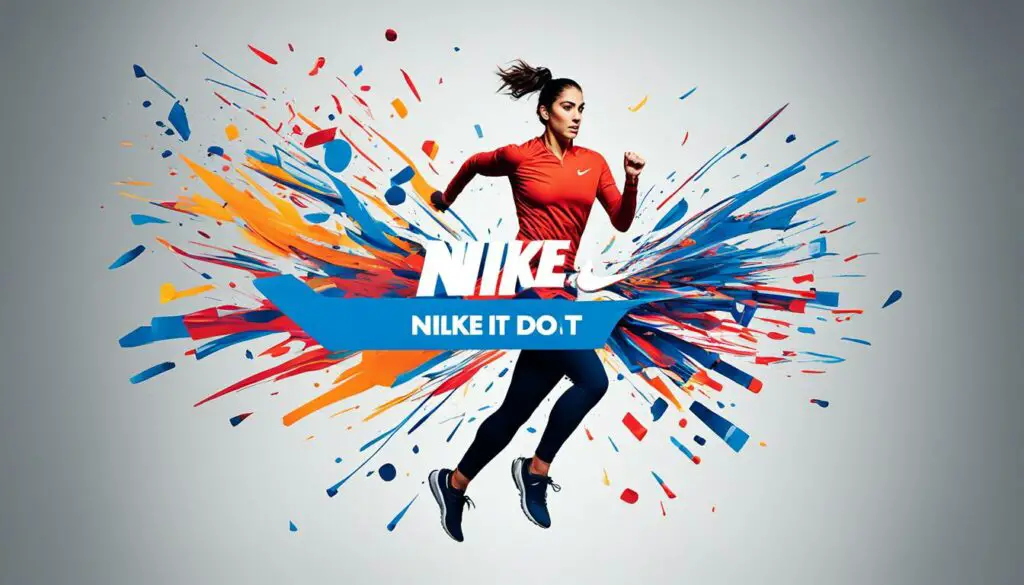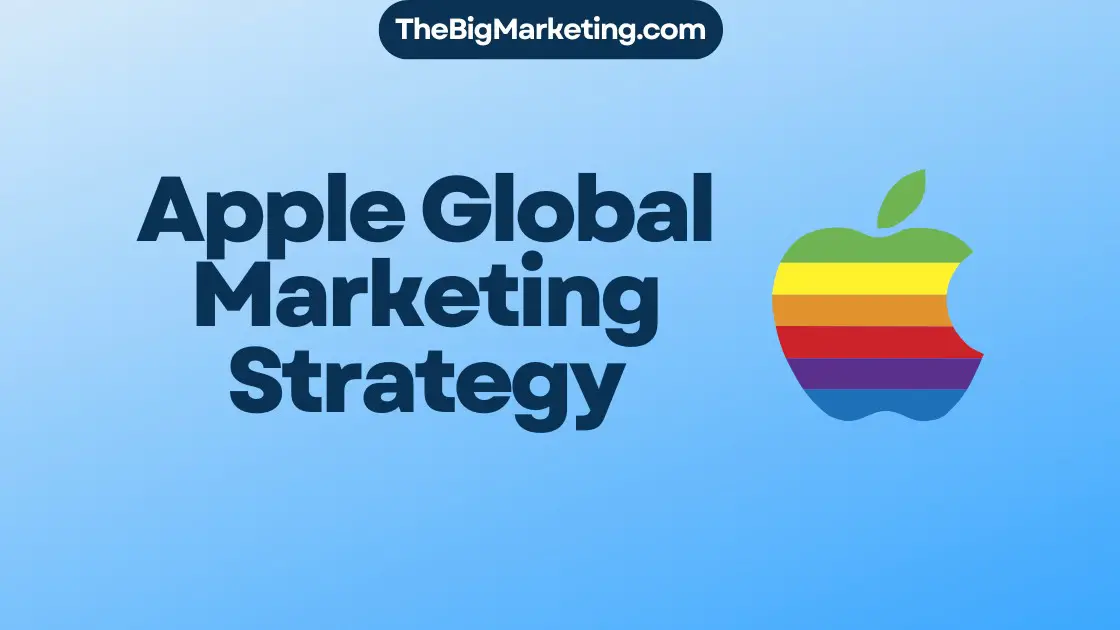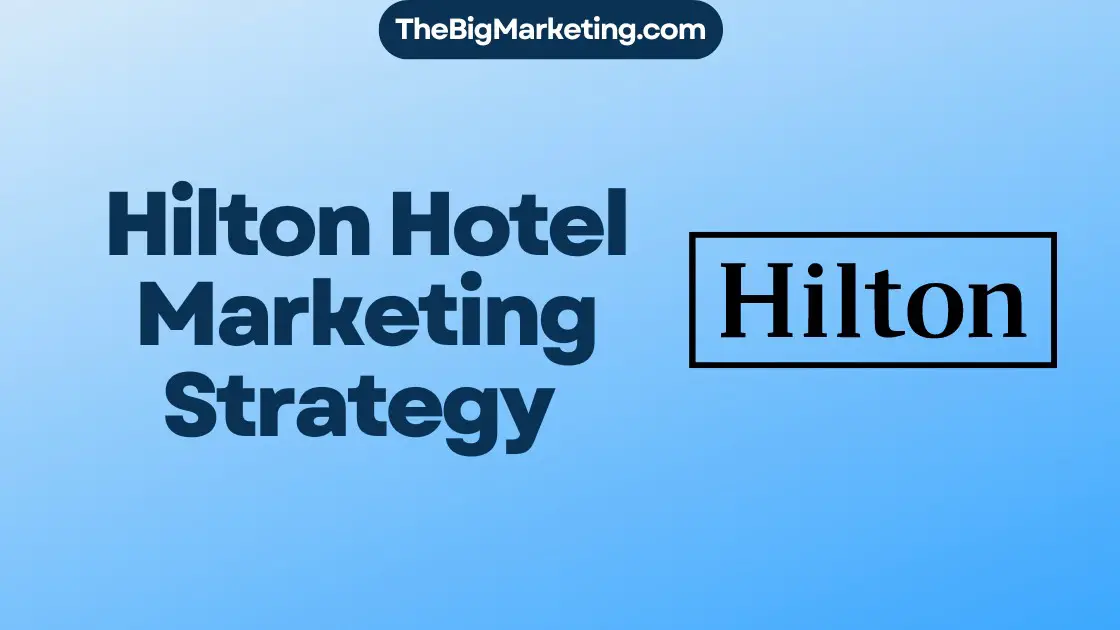When it comes to advertising campaigns, there are two primary strategies: above the line (ATL) and below the line (BTL) marketing. Understanding the difference between these approaches is crucial for businesses looking to effectively promote their brand and engage with their target audience. In this comprehensive guide, we will explore the nuances of ATL and BTL marketing, their benefits, and how they can be combined to create a well-rounded marketing strategy.
Key Takeaways
- Above the line (ATL) marketing focuses on mass media promotion to reach a large audience, while below the line (BTL) marketing targets a smaller, more targeted audience.
- ATL advertising utilizes channels such as TV, radio, print media, and billboards to enhance brand awareness on a large scale.
- BTL advertising engages with a specific audience through mediums like direct mail campaigns, sponsorships, and email marketing, allowing for a personalized approach.
- Both ATL and BTL marketing have their own unique benefits and can be combined to maximize brand visibility and customer engagement.
- By understanding the difference between ATL and BTL marketing, businesses can make informed decisions to effectively allocate their marketing budget and achieve their desired goals.
What is Above the Line Advertising?
Above the line advertising, or ATL advertising, is a marketing strategy that utilizes mass media channels such as television, radio, print media, and billboards to reach and engage a large audience. It is an effective method for promoting brand awareness on a larger scale and capturing consumers’ attention through a combination of audio and visual elements.
ATL advertising is designed to create broad exposure for a brand or product, targeting a wide range of individuals instead of specific market segments. By leveraging popular media channels, companies can generate widespread recognition and familiarity with their brand, leading to increased brand awareness and recall among consumers.
The goal of above the line advertising is to create a lasting impression and build strong brand associations in the minds of consumers. By using mass media platforms, companies can effectively communicate their brand message to a diverse audience, fostering brand loyalty and driving consumer engagement.
Above the line advertising plays a crucial role in media promotion, allowing companies to establish a dominant presence in the market. By leveraging the reach and impact of mass media channels, brands can ensure that their message reaches a large number of potential customers. This helps in boosting brand awareness and visibility, enabling companies to establish themselves as leaders in their industry.
| Benefits of Above the Line Advertising |
|---|
| 1. Enhanced Brand Awareness |
| 2. Wide Reach and Exposure |
| 3. Attention-Grabbing Communication |
| 4. Integration of Audio and Visual Elements |
| 5. Increased Consumer Engagement |
Above the line advertising provides companies with the opportunity to create memorable and impactful campaigns that capture the attention of potential consumers. With the right creative elements and messaging, brands can effectively communicate their value proposition and build lasting brand impressions.
While ATL advertising is a powerful tool for brand awareness, it is important for companies to carefully consider their target audience and marketing objectives. By combining above the line advertising with below the line (BTL) marketing strategies, companies can develop a holistic approach that maximizes their marketing efforts and delivers tangible results.
Benefits of Above the Line Advertising
Above the line advertising offers several key benefits that make it a powerful tool in the world of marketing. Let’s explore some of these advantages:
Boosting Brand Awareness
Above the line advertising enables businesses to increase their brand awareness on a large scale. By leveraging mass media channels such as TV, radio, and print media, companies can reach a broad audience and ensure that their brand message is seen and heard by many potential customers.
Attention Grabbing
With its combination of audio and visual elements, above the line advertising has the power to grab the attention of consumers. Captivating TV commercials, eye-catching billboards, and memorable radio jingles can leave a lasting impression on viewers and listeners, ensuring that the brand remains in their minds.
Wide Reach
Above the line advertising allows businesses to reach a large audience effectively. Through popular mass media channels, companies can tap into a diverse range of consumers, exposing their brand to a broad demographic. This widespread reach increases the chances of attracting potential customers and expanding the brand’s market presence.
To further illustrate the benefits of above the line advertising, we can analyze the following data:
| Benefits | Explanation |
|---|---|
| Boosting Brand Awareness | Above the line advertising helps businesses gain widespread recognition and increases the chances of a brand being remembered by consumers. |
| Attention Grabbing | With its combination of audio and visual elements, above the line advertising captivates consumers’ attention and leaves a lasting impression. |
| Wide Reach | Above the line advertising allows businesses to reach a diverse audience, expanding their market presence and attracting potential customers. |
With these clear benefits in mind, businesses can harness the power of above the line advertising to enhance their brand visibility, grab consumer attention, and ultimately achieve their marketing goals.
What is Below the Line Advertising?
Below the line advertising, or BTL advertising, is a marketing approach that targets a specific, targeted audience through various promotional activities. Unlike above the line advertising that focuses on mass media channels, BTL advertising utilizes personalized strategies to engage with the intended audience on a more personal level.
Some common below the line advertising techniques include:
- Direct mail campaigns
- Brochures and flyers
- Sponsorship of events or sports teams
- Email campaigns
BTL advertising allows businesses to tailor their messaging and promotions to reach a smaller, more receptive audience. By directly targeting specific individuals or groups, brands can create customized experiences that resonate with their target market.
The Benefits of Below the Line Advertising
There are several advantages to incorporating below the line advertising into a marketing strategy:
- Targeted audience: BTL advertising enables brands to connect with a specific segment of the population, ensuring that their messaging is relevant to their intended audience.
- Personalized communication: By employing direct mail campaigns or email marketing, businesses can create personalized messages that speak directly to their customers’ needs and preferences.
- Measurable results: BTL advertising tactics often provide precise metrics, allowing brands to track the success of their campaigns and make data-driven decisions.
- Building relationships: BTL advertising provides opportunities to engage with customers on an individual level, fostering stronger connections and loyalty.
BTL advertising complements above the line strategies by offering a more personalized and targeted approach. By combining both ATL and BTL marketing tactics, brands can create a well-rounded marketing campaign that maximizes reach and engagement.
Example of a Direct Mail Campaign
| Company | Campaign Objective | Target Audience | Results |
|---|---|---|---|
| XYZ Corporation | Promote a new product launch | Existing customers | Increase in repeat purchases by 30% |
| ABC Retail | Drive foot traffic to stores | Local residents within a 5-mile radius | 10% increase in store visits within one month |
| 123 Services | Upsell premium services to current clients | High-value customers | 40% conversion rate on upsell offers |
Benefits of Below the Line Advertising
Below the line advertising provides a range of benefits that can greatly enhance your marketing campaigns. Let’s explore some of the advantages:
1. Focus on Specific Audience Segments
Below the line advertising allows you to target specific audience segments with precision. By tailoring your messages and campaigns to the unique needs, demographics, and interests of these segments, you can create highly personalized and relevant experiences that resonate with your target customers.
2. Good Measure of Results
One of the significant advantages of below the line advertising is that it offers highly measurable results. Unlike above the line advertising, which focuses on broader reach and brand awareness, below the line strategies provide tangible metrics and data that enable you to track the success of your campaigns. This allows for better optimization and adjustments to ensure maximum return on investment.
3. Building Stronger Relationships
Below the line advertising fosters a more direct and intimate relationship with your customers. Through personalized engagement and targeted communication, you have the opportunity to build customer loyalty, trust, and long-lasting relationships. By understanding your customers’ individual preferences and needs, you can create customized experiences that resonate and add value to their lives.
These are just a few of the many benefits that below the line advertising can bring to your marketing efforts. By focusing on specific audience segments, obtaining measurable results, and building strong customer relationships, you can create impactful campaigns that drive results and contribute to the growth of your brand.
Above the Line Vs Below the Line: Which Way to Go?
When it comes to advertising, companies often find themselves faced with the question of whether to focus on above the line (ATL) or below the line (BTL) marketing strategies. However, a more effective approach may be to combine both methods, leveraging the advantages of each to maximize marketing efforts.
By combining ATL and BTL advertising, companies can reach a wider audience while also engaging in personalized and targeted marketing activities. This offers the potential to increase brand awareness on a large scale while also building stronger relationships with specific segments of the audience.
One of the main considerations when deciding which way to go is the advertising budget. ATL marketing, with its reliance on mass media channels such as television, radio, and print media, can be more costly due to the higher production costs and media placement expenses. On the other hand, BTL marketing, with its focus on targeted activities, may require a larger investment in terms of time and effort but can be more cost-effective.
Another key factor to consider is the return on investment (ROI). Recent trends indicate that gradually increasing the use of below the line advertising can result in a great ROI. By combining ATL and BTL, companies can generate brand awareness and reach while also directly engaging with their target audience, leading to higher conversion rates and sales.
To summarize, when deciding between above the line and below the line marketing, the best approach may be to combine both methods. This allows companies to tailor their marketing efforts based on their specific needs, target audience, and budget. By finding the right balance between ATL and BTL, companies can achieve maximum ROI while effectively reaching and engaging their audience.
| Factors | Above the Line (ATL) | Below the Line (BTL) | Combined ATL and BTL |
|---|---|---|---|
| Target Audience | Wide audience reach | Targeted audience segmentation | Wide audience reach with personalized engagement |
| Cost | Higher cost due to production and media placement expenses | Can be more cost-effective, but may require larger investment in time and effort | Balanced approach based on budget allocation |
| Return on Investment (ROI) | Good for brand awareness and reach | Higher ROI with personalized engagement and direct response | Potential for higher ROI by leveraging the strengths of both methods |
What is Through the Line Marketing?
Through the line marketing, or TTL marketing, combines above the line and below the line strategies to create an integrated marketing campaign that targets a wide range of consumers across multiple channels. It aims to achieve the best of both worlds by combining mass-market advertising with targeted, personalized marketing.
TTL marketing utilizes the strengths of above the line (ATL) and below the line (BTL) advertising to create a comprehensive approach that maximizes reach and engagement. By integrating both ATL and BTL strategies, companies can effectively communicate their brand message to a larger audience while also catering to the specific needs and preferences of individual consumers.
One of the key advantages of TTL marketing is the ability to leverage mass media channels such as television, radio, and print advertising to increase brand awareness on a large scale. These channels allow companies to reach a broad audience and create a strong brand presence through visually appealing and captivating campaigns.
Additionally, TTL marketing combines targeted advertising efforts to engage consumers on a more personalized level. Through techniques such as direct mail campaigns, email marketing, social media advertising, and influencer partnerships, companies can establish direct connections with their target audience and deliver tailored messaging that resonates with their specific interests and preferences.
Integrated marketing campaigns under the TTL approach prioritize consistent messaging and brand identity across all channels. By ensuring that advertising efforts are aligned and cohesive, companies can build trust and loyalty with their audience, ultimately driving customer acquisition and retention.
Overall, Through the Line marketing offers a holistic approach to advertising that blends the power of mass-market reach with the precision of targeted advertising. By leveraging the strengths of both ATL and BTL strategies, companies can elevate their marketing efforts and generate impactful results.
| Advantages | Above the Line | Below the Line | Through the Line |
|---|---|---|---|
| Increases brand awareness | ✓ | ✓ | |
| Reaches a wide audience | ✓ | ✓ | |
| Delivers personalized messaging | ✓ | ✓ | |
| Builds customer loyalty | ✓ | ✓ | |
| Creates consistent brand identity | ✓ | ✓ | ✓ |
Definitions of ATL, BTL, and TTL Marketing
In the world of advertising and marketing, various terms and strategies are used to drive brand awareness and engage with target audiences. Three commonly used terms are Above the Line (ATL) Marketing, Below the Line (BTL) Marketing, and Through the Line (TTL) Marketing. Let’s explore these definitions further:
1. Above the Line (ATL) Marketing
Above the Line Marketing, often abbreviated as ATL Marketing, refers to mass media advertising strategies that aim to reach a wide audience. It utilizes traditional channels such as television, radio, print media, and billboards to promote brands and products to a broad demographic. The primary objective of ATL Marketing is to build brand awareness and amplify reach on a large scale.
2. Below the Line (BTL) Marketing
Below the Line Marketing, also known as BTL Marketing, focuses on targeted marketing activities that aim to engage with specific audience segments. BTL strategies often include direct mail campaigns, email marketing, sponsorships, events, and point-of-sale promotions. Unlike ATL Marketing, BTL Marketing aims to establish direct connections with potential customers and initiate personalized interactions.
3. Through the Line (TTL) Marketing
Through the Line Marketing, commonly referred to as TTL Marketing, combines both ATL and BTL strategies to create integrated campaigns. By utilizing a blend of mass media advertising and targeted marketing activities, TTL Marketing aims to maximize brand exposure and engagement. This approach allows companies to leverage the strengths of both ATL and BTL Marketing, achieving a wider reach while maintaining personalized interactions with the target audience.
Understanding the definitions and distinctions between ATL, BTL, and TTL Marketing is crucial for developing effective marketing campaigns. By strategically utilizing mass media advertising and targeted marketing activities, businesses can create integrated campaigns that effectively communicate their message and achieve their marketing goals.
Now, let’s take a closer look at the benefits and advantages of each marketing approach and explore successful examples of campaigns in the industry.
| Above the Line (ATL) Marketing | Below the Line (BTL) Marketing | Through the Line (TTL) Marketing | |
|---|---|---|---|
| Definition | Mass media advertising for broad reach and brand awareness | Targeted marketing activities for personalized engagement | Combination of ATL and BTL strategies for an integrated campaign |
| Main Channels | TV, radio, print media, billboards | Direct mail, email marketing, sponsorships, events | TV, radio, print media, billboards, direct mail, email marketing, etc. |
| Primary Objective | Brand awareness, reach a wide audience | Personalized engagement, targeted audience segments | Amplify reach while maintaining personalized interactions |
Examples of Successful ATL Marketing Campaigns
Successful above the line (ATL) marketing campaigns have the power to leave a lasting impact on audiences and propel brands to new heights. Let’s explore some notable examples that have achieved significant brand recognition and increased sales:
Coca-Cola’s Share a Coke Campaign
Coca-Cola’s Share a Coke campaign took personalization to a whole new level. By replacing its iconic logo with popular names on soda bottles and cans, Coca-Cola encouraged customers to share their personalized bottles with friends and loved ones. This campaign not only drove immense social media engagement but also created a sense of personal connection with consumers, resulting in a significant increase in sales.
Nike’s Just Do It Campaign

Nike’s Just Do It campaign is one of the most iconic and successful ATL marketing campaigns of all time. By inspiring individuals to embrace their inner athletes and push beyond their limits, Nike connected deeply with its target audience. This powerful campaign not only solidified Nike’s brand identity but also had a profound impact on the overall sports and fitness culture.
Apple’s Think Different Campaign
Apple’s Think Different campaign revolutionized the tech industry by challenging conventional norms and celebrating those who dared to think differently. By featuring visionaries such as Albert Einstein and Martin Luther King Jr., Apple positioned itself as a brand that stands for creativity, innovation, and individuality. This campaign not only helped Apple establish its distinctive brand identity but also played a crucial role in its long-term success.
These three examples highlight the immense potential of successful ATL marketing campaigns in creating brand recognition, driving sales, and resonating with consumers on a deeply emotional level. By leveraging mass media channels effectively, these brands have achieved remarkable success and set the bar high for future ATL campaigns.
BTL Marketing in Email Marketing Campaigns
BTL marketing, also known as below the line marketing, can be highly effective in email marketing campaigns. It involves personalized and targeted messaging to engage with the audience effectively. By leveraging BTL strategies in email marketing, businesses can create a more personalized and engaging experience for their subscribers.
One of the common BTL tactics in email marketing is the use of Welcome emails. These emails are sent immediately after someone subscribes to a mailing list or makes a purchase. Welcome emails provide an opportunity to introduce the brand, set expectations, and build a strong foundation with the audience.
Another BTL strategy is to utilize Abandoned cart emails. These emails are sent to remind customers about the products they left behind in their online shopping cart. By providing incentives or personalized product recommendations, businesses can entice customers to complete their purchase.
Furthermore, Re-engagement emails are a powerful BTL technique to reconnect with inactive subscribers. By offering exclusive promotions or personalized content, businesses can motivate recipients to re-engage with their brand and prevent them from becoming completely disengaged.
Birthday or anniversary emails are yet another example of BTL marketing in email campaigns. By acknowledging and celebrating important milestones in subscribers’ lives, businesses can create a sense of personal connection and loyalty.
| Email Marketing Campaign | BTL Strategy |
|---|---|
| Welcome emails | Introduce the brand, set expectations, and establish rapport |
| Abandoned cart emails | Remind customers about their abandoned carts and provide incentives to complete the purchase |
| Re-engagement emails | Reconnect with inactive subscribers through exclusive offers or personalized content |
| Birthday or anniversary emails | Acknowledge and celebrate important milestones to foster a sense of loyalty |
Incorporating BTL marketing strategies into email campaigns allows businesses to deliver personalized and targeted content, increasing the chances of meaningful engagement with their subscribers. By leveraging BTL tactics such as welcome emails, abandoned cart emails, re-engagement emails, and birthday or anniversary emails, businesses can cultivate stronger relationships and improve overall campaign effectiveness.
Email Signature Marketing as BTL Strategy
Email signature marketing is a powerful below the line (BTL) strategy that allows businesses to leverage their email communications as a marketing tool. By including marketing messages or call-to-action (CTAs) in email signatures, companies can effectively promote their brand, products, or services with every email sent.
Benefits of Email Signature Marketing
- Personalized Messaging: Email signature marketing enables businesses to tailor their messages directly to the recipient, creating a personalized and targeted approach that enhances engagement and response rates.
- Increased Brand Visibility: With email being one of the most commonly used communication channels, email signature marketing ensures consistent brand visibility in every email, reinforcing brand recognition and recall.
- Cost-Effective Marketing Efforts: Implementing email signature marketing is a cost-effective strategy compared to traditional advertising methods. It maximizes the reach and impact of marketing efforts without incurring significant expenses.
- Call-to-Action (CTA): Including a CTA in email signatures allows businesses to drive specific actions from recipients, such as visiting a website, subscribing to a newsletter, or making a purchase, directly influencing conversion rates.
- Brand Consistency: Email signature marketing helps maintain brand consistency by incorporating company logos, colors, and messaging, ensuring a cohesive and professional brand image across all email communications.
By capitalizing on the ubiquity of email and leveraging email signatures as a marketing asset, businesses can effectively enhance their below the line (BTL) marketing efforts and create meaningful customer interactions.
| Email Signature Marketing | Above the Line (ATL) Marketing | Below the Line (BTL) Marketing |
|---|---|---|
| Personalized messaging to recipients | Mass media promotion to reach a large audience | Targeted marketing activities focusing on specific audience segments |
| Cost-effective marketing approach | Higher budget requirements for mass media advertising | More cost-efficient compared to ATL advertising |
| Provides direct call-to-action (CTA) | Creates brand awareness and exposure | Builds personalized relationships with target audience |
Conclusion
Above the line (ATL) and below the line (BTL) marketing each offer unique strengths and advantages in reaching and engaging with target audiences. ATL marketing utilizes mass media channels such as television, radio, and print media to create widespread brand awareness and capture the attention of a large audience. On the other hand, BTL marketing adopts a more personalized approach, targeting specific audience segments through direct mail campaigns, sponsorships, and email marketing.
While both ATL and BTL marketing have their merits, combining these strategies can lead to a more comprehensive and effective marketing campaign. By leveraging the broad reach of ATL and the personalized engagement of BTL, businesses can maximize the impact of their marketing efforts, ultimately driving brand recognition and increasing sales.
When deciding on the appropriate marketing approach, careful consideration of the target audience, available budget, and campaign goals is crucial. Understanding the preferences and behaviors of the target audience will help determine which strategy will resonate most effectively. Additionally, evaluating the allocated budget and desired campaign outcomes can guide the decision-making process, ensuring that resources are allocated efficiently.
In conclusion, Above the Line Vs Below the Line Marketing each have their unique benefits. However, combining both strategies can provide a more comprehensive and optimized marketing approach. By tailoring the marketing mix to address the specific needs and preferences of the target audience, businesses can maximize their overall marketing impact and drive meaningful results.
FAQ
What is above the line advertising?
Above the line advertising, or ATL advertising, refers to the use of mass media channels such as TV, radio, print media, and billboards to reach a large audience.
What are the benefits of above the line advertising?
Above the line advertising offers benefits such as boosting brand awareness on a large scale, grabbing consumers’ attention through audio and visual elements, and reaching a large audience effectively.
What is below the line advertising?
Below the line advertising, or BTL advertising, is directed at a small, targeted audience through marketing activities such as brochures, direct mail, flyers, sponsorships, and email campaigns.
What are the benefits of below the line advertising?
Below the line advertising offers benefits such as the ability to focus on specific audience segments, highly measurable results, and the opportunity to build customer loyalty through personalized engagement.
Should I focus on above the line or below the line marketing?
Combining above the line and below the line advertising is often the most effective approach, as it allows companies to maximize their marketing efforts based on their needs and budget.
What is through the line marketing?
Through the line marketing, or TTL marketing, combines above the line and below the line strategies to create an integrated marketing campaign that targets a wide range of consumers across multiple channels.
What are the definitions of ATL, BTL, and TTL marketing?
ATL stands for Above the Line Marketing, referring to mass media advertising. BTL stands for Below the Line Marketing, focusing on targeted marketing activities. TTL stands for Through the Line Marketing, combining both ATL and BTL strategies to create an integrated campaign.
Can you provide examples of successful ATL marketing campaigns?
Examples of highly successful ATL marketing campaigns include Coca-Cola’s Share a Coke campaign, Nike’s Just Do It campaign, and Apple’s Think Different campaign.
How can BTL marketing be effective in email campaigns?
BTL marketing can be highly effective in email marketing campaigns, allowing for personalization and targeted messaging. Examples include welcome emails, abandoned cart emails, birthday or anniversary emails, and re-engagement emails.
What is email signature marketing as a BTL strategy?
Email signature marketing is a form of BTL marketing that involves including marketing messages or CTAs in email signatures. It allows for personalized messaging, increased brand visibility, and cost-effective marketing efforts.
What is the importance of combining ATL and BTL marketing?
Combining above the line and below the line marketing allows for a more comprehensive and effective marketing campaign. Careful consideration of the target audience, budget, and campaign goals is essential in making the best marketing decisions.






